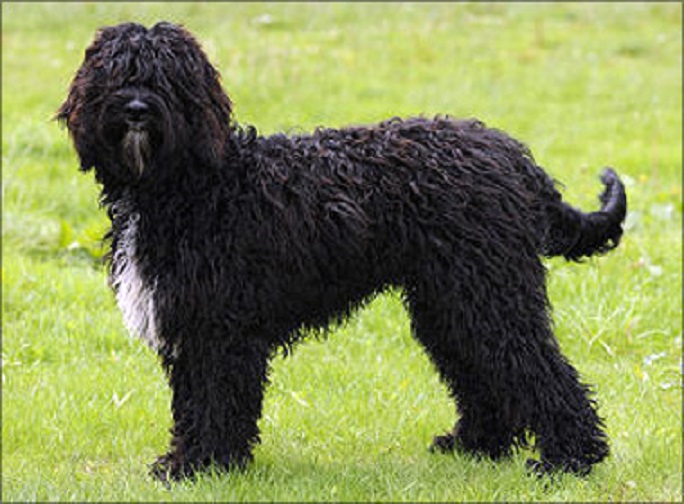
Barbet

Navigate through the tabs
Navigate through the tabs below to view the breed's info of your interest.
The breed's info is divided in four sections; namely:
the breed's history ,
the breed's main stats ,
the dog's potential health issues
and finally, how the breed scored in 26 different categories.
All the above information should give you a respectively good overview for the dog of your interest.
Dog Breed's Main Info
The Breed's History:
The breed is an integral part of dog history, and many familiar breeds have Barbet in their ancestry. Depending on geography and necessity, the barbet connected through the centuries in various capacities, and as a companion dog, but more as an all-around working dog. The name barbet became throughout centuries a "generic" name for a dog with a long, curly, woolly coat.
The "Grand Barbet" depicted in Count George Louis Buffon's book "Histoire Naturelle" (1750) is thought to be the original source of the various water dog breeds (poodle, Portuguese water dog, American water spaniel, and so on). Its actual origin is lost in antiquity but probably[opinion] stems from corded herding stock.
The barbet has also worked as sailor's assistants, much like the Portuguese water dog. It was best known for being a waterfowl retriever in the marshes, wetlands, and estuaries of France. This is where the expression "muddy as a barbet" came from in the 19th century. Between the late 18th to early 19th centuries, the same dog was known as the barbet in France, the barbone in Italy, and the pudel in Germany; for almost a hundred years the barbet and poodle were considered one and the same.
With the advent of dog shows and selective breeding based purely on aesthetics, the poodle was developed to be more elegant and of a solid colour to distinguish it from its more common past. The versatile nature of the Barbet has meant its survival, and many of today's Barbet still have the assets attributed to them from the past. The Barbet origins and bloodlines can be traced back to the writing of the first standard in 1891.
The breed is gaining popularity in Scandinavian countries and North America as more and more people are becoming interested in this all-around working dog, often simply as a pet.
Country of Origin:
France
Breed Group:
Sporting
Height:
1 foot, 8 inch. to 2 feet, 1 inch. (50,8 to 63,5 cm)
Weight:
37 to 62 pounds (16,78 to 28,13 Kg)
Life Span:
13 to 15 years
Potential Health Issues:
Hip Dysplasia,
Ear Infections
Adaptability
Apartment Living:
First Time Owners:
Sensitivity:
Being Alone:
Cold Weather:
Hot Weather:
Friendliness
Affection With Family:
With Kids:
With Dogs:
With Strangers:
Health and Grooming
Shedding:
Drooling:
Easy To Groom:
Overall Health:
Weight Gain Potential:
Size:
Training
Easiness:
Intelligence:
Mouthiness:
Prey Drive:
Barking or Howling:
Wanderlust:
Need For Exercise
Energy Level:
Intensity:
Exercise Needs:
Playfulness:
Our Mobile Application
Check out Our Mobile Application "Dog Breeds Central"
